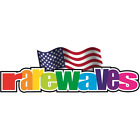Picture 1 of 1

Stock photo

Picture 1 of 1

Stock photo

Kitchen Chemistry by Heston Blumenthal and Ted Lister (2005, Trade Paperback)

rarewaves-united (423743)
98.7% positive Feedback
Price:
€ 39.86
Free postage
Returns:
30 days return. Buyer pays for return postage. If you use an eBay delivery label, it will be deducted from your refund amount.
Condition:
Oops! Looks like we're having trouble connecting to our server.
Refresh your browser window to try again.
About this product
Product Information
All food is, of course, made of chemicals, and cooking can be thought of as a series of chemical reactions in which changes occur to some of these chemicals. The aims of cooking are several: ? to kill microorganisms and denature enzymes that might bring about undesirable changes in food ? to maintain or enhance the nutritional value of the food ? to improve the texture of the food ? to improve the appearance of the food ? to improve the flavour of the food ? to improve the aroma of the food. The material presented here looks at various aspects of the chemistry of food and the cooking process. It consists of activities of a variety of types ? class practical, demonstration experiments, reading comprehension and paper-based activities ? at a variety of levels. The index table will allow users to select an activity of an appropriate topic, type and level. Each activity deals with an aspect of the chemistry of food and/or cooking. Although the chemistry of food and cooking is not directly part of most curricula, it can often be used to show familiar chemistry in a context that may be stimulating for many students. The material also allows teachers to reinforce the idea that everything is made of chemicals and that there is no difference between ?man-made? and ?natural? chemicals. In particular there are a number of activities on which experimental investigations can be based. Some of the paper-based or comprehension activities could be used as revision lessons or in the case of teacher absence. Thematerial is presented as teacher?'s notes and student worksheets. The worksheets are available on the CDROM accompanying this book or may be downloaded free from the website for this book as colour or black and white pdf files, or as Microsoft? Office Word documents (which can be edited by the teacher if required). Also included on the CDROM and website are video clips related to some of the material. These may be played to start off a lesson or stimulate discussion. However, all the lessons can be tackled without the use of the video clips for those who prefer not to use them. In every case, material is given that the teacher can use to start the lesson by discussion. The video clips are taken from the Discovery Channel TV series, Kitchen Chemistry, featuring Heston Blumenthal. Heston is a chef and proprietor of The Fat Duck, a Michelin three-star restaurant in Bray, Berkshire, UK. He is noted for his scientific approach to food and cooking and for the fact that he will not take for granted the accepted wisdom without scientifically investigating it for himself. He also makes use of scientific equipment in the kitchens of the Fat Duck ? temperature probes, desiccators and reflux apparatus, for example.Product Identifiers
PublisherRoyal Society of Real Chemistry, T.H.E.
ISBN-100854043896
ISBN-139780854043897
eBay Product ID (ePID)89683470
Product Key Features
Educational LevelHigh School, Elementary School
Number of Pages142 Pages
LanguageEnglish
Publication NameKitchen Chemistry
Publication Year2005
SubjectSecondary, Chemistry / General
TypeStudy Guide
AuthorHeston Blumenthal, Ted Lister
Subject AreaEducation, Science
FormatTrade Paperback
Dimensions
Item Height0.5 in
Item Weight17.3 oz.
Item Length11.7 in
Item Width8.3 in
Additional Product Features
Intended AudienceElementary/High School

![Kitchen Chemistry [With CDROM],Ted Lister, Heston Blumenthal](https://i.ebayimg.com/images/g/PxMAAOSwqV1fMr4g/s-l225.jpg)
![Kitchen Chemistry [With CDROM]-Ted Lister, Heston Blumenthal](https://i.ebayimg.com/images/g/a74AAOSwTWxcrwPU/s-l225.jpg)

![Kitchen Chemistry [With CDROM] by Lister, Ted Paperback Book The Cheap Fast Free](https://i.ebayimg.com/images/g/dIQAAeSwQ71nqE9e/s-l225.jpg)













